Distributed Audio System Basics
Distributed AudioSystem Basics
In this chapter, you will learn about
- Audio concepts and basic terminology
- Different types of distributed audio systems
- Audio system hardware and components
- Different types of audio source equipment
The ability to have high-fidelity (Hi-Fi) music in every room of a home is no longer limited to the owners of million dollar mansions with unlimited budgets. With existing technology, the cost of installing a whole house audio system has fallen to the point where such a system can be a reality for virtually any homeowner.
Installing a distributed audio system, one that distributes audio throughout a house, allows the customer to virtually replicate his or her audio source equipment into every room of the house. The expense of actually installing Hi-Fi audio equipment in every room is prohibitive for most homeowners, but with a relatively modest investment in wiring, speakers, and controls, every room in the house can have radio and recorded music playback.
In this, and the next few, chapters, we look at the basics of a distributed audio systems, as well as a more detailed examination of the hardware and wiring, and installation procedures required, along with a few troubleshooting techniques.
Audio Systems Basics
Audio systems have a language all their own and when you help a homeowner choose the system and features that will work best for his or her needs and budget, you should be able to speak the language. The customer may have a number of questions about how one system may be a better choice than another or why one feature should be used over another, and with an understanding of audio system terminology and concepts, you will have the answers. On the other hand, the customer may be an audiophile that really knows his or her stuff or someone that knows the terms, but doesn’t quite have the meanings down. In either case, being well-versed in audio systems is sure to contribute to the design and installation of a system that satisfies the customer’s wishes, wants, and needs.
The audio terms and concepts you should know, at a minimum, are
- Sound characteristics
- Analog versus digital audio signals
- Line-level versus speaker-level
- Balanced versus unbalanced
- Electrical properties
- Surround sound
Sound Characteristics
Before you can understand audio systems, you need to first understand sound and how it is generated, heard, and transmitted. After all, what an audio system does is reproduce sound that has been recorded on some form of analog or digital media.
Sound is produced when an object creates vibrations in air, liquid, or something solid. I am going to deal with sound vibrations in the air first and discuss how sound is generated from a speaker later in the section titled “Speaker Basics.”
Vibrating Air
When any object vibrates, it agitates the air around it, which makes the molecules in the air bounce around and a chain reaction starts. The moving molecules cause other air molecules to begin moving, and so on. This movement of the air molecules, which is caused by the originating vibration, is how sound moves through the air: one set of moving molecules causes others to move or vibrate. All of this vibration creates a pulsing wave of moving air molecules that travels through the air—something like ripples in a pond. The effect is a series of pulse waves with increased and decreased air pressure.
Your ears contain eardrums, which are thin membranes of skin. The eardrum catches the vibrating wave of air pressure and begins to vibrate. Your brain then interprets the vibrations of the eardrum into what we hear as sound.
A vibrating object creates a fluctuating wave of air pressure that moves through the air (or liquid or solids) to our ear, and our brain “hears” it as a voice, some music, or a whole range of other sounds. What causes one sound to be heard differently than another? Different sounds have different vibration patterns and air pressure fluctuations, which translate into a sound’s frequency and amplitude.
Frequency and Amplitude
The frequency of a sound wave represents the number of times the air pressure of the wave fluctuates up and down in a certain period of time. Each fluctuation cycle (measured from the peak of one wave to the peak of the next wave, as shown in Figure 15-1) represents one sound wave and its wavelength.
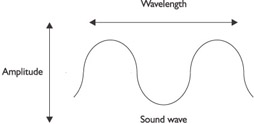
Figure 15-1: The characteristics of a sound wave
How many waves occur in a set period of time, such as a second or a fraction of a second, represents the sound wave’s frequency, or how frequent the sound wave fluctuates over time. As is illustrated in Figure 15-2, sound waves can have a higher frequency, meaning there are more waves in a time period, or a lower frequency, meaning there are less waves in a time period. High frequency sound waves are heard as higher-pitched sounds and low frequency sound waves are heard as lower-pitched sounds. The frequency of a sound wave is equivalent to the sound’s pitch.
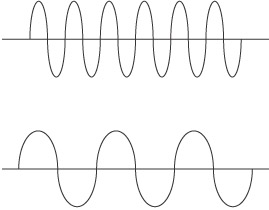
Figure 15-2: High frequency sound waves (top) have a higher pitch than low frequency sound waves (bottom).
Another characteristic of sound waves is amplitude, which translates into how loud the sound is heard. The height of a sound wave, as shown in Figure 15-1, is its amplitude. The amplitude of a sound wave also represents the amount of air pressure in the wave. Higher amplitudes hit the eardrum harder and are heard as louder sounds.
Decibels
There is a relationship between the volume level a speaker produces and the amount of power an amplifier produces. The loudness of the sound coming from a speaker is a fairly subjective thing, with each listener having his or her version of what is too loud or not loud enough. In order to set how loud a speaker should be, a scale is used to determine a level that’s acceptable to everyone and serves as a standard setting. For the sound produced by a speaker (and sound produced by just about anything), the measurement used is the decibel (dB).
A dB measures the intensity or the level of a sound. This logarithmic scale is able to represent a wide range of sound level measurements with relatively simple numbers. However, because decibel measurements are logarithmic, they can also be confusing; for example, 2.0 dB is not twice as loud as 1.0 dB. Table 15-1 shows the relationship of different dB levels to line voltage (signal strength), power (watts of amplifier output), and volume (the loudness of a speaker’s output).
|
dB Increase |
Voltage Increase |
Power Increase |
Volume Increase |
|---|---|---|---|
|
3 |
1.4 |
2 |
1.2 |
|
6 |
2.0 |
4 |
1.5 |
|
10 |
3.2 |
10 |
2 |
|
20 |
10.0 |
100 |
4 |
|
40 |
100.0 |
10,000 |
16 |
Using the information in Table 15-1, to double the sound level produced by a speaker requires an increase of about three times the signal strength and a ten-fold increase in the amplifier output, which equates to a increase of 10 dB.
Analog versus Digital Sound
Recorded or broadcasted sounds are either analog or digital. The quality of a reproduced sound isn’t necessarily affected by whether it is analog or digital. However, the quality of a recorded analog or digital sound and the fidelity of its reproduction are directly dependent on the equipment in use.
Analog Sound
Analog sound is sound that is transmitted or recorded in its natural state, which means it was originally created in sound-wave form. Phonograph records were manufactured to cause the phonograph needle to vibrate and reproduce the analog sound etched into the plastic or vinyl on the record.
Analog sound can also be recorded onto audiotape. The record heads present the characteristics of the sound as electromagnetic impulses stored on the tape. When the tape is played, the record heads pick up these impulses and translate them into frequency, pitch, and amplitude, which is heard as a representation of the original sound.
The quality of the sound reproduction, which is determined partly by the recording of the sound and partly by the quality of the playback device, is its fidelity. Hi-Fi sound reproduction reproduces a sound quality that represents a sound that is very similar to the original sound. Low-fidelity sound is a poor reproduction of the original sound.
Digital Sound
The quest of the recorded sound industry has always been to create recording and playback devices that are able to record and reproduce sounds that are a perfect reproduction of the original sound; this has led to the development of digital recording and playback technologies.
Converting Audio to DigitalWhere analog recordings represent a sound by causing a pickup device to vibrate or emulate the vibrations of the original recording, digital recordings store a series of binary numbers that represent the characteristics of the original sound.
To do this, a sound wave is sliced into a number of samples, as illustrated in Figure 15-3. A piece of the sound is captured at different points along the wavelength. Each sample represents a different combination of frequency and amplitude in the sound, which can be converted to a numeric value and stored as a binary number on the recorded media.
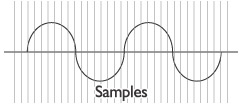
Figure 15-3: An analog sound wave is divided into a series of samples, which are used to digitally record the sound.
Digital recordings and their playback mechanisms must be coordinated for the sampling rate (the number of samples taken per second of sound) and the sampling precision (the number of samples taken in a sound wave’s vertical height).
The device used to convert an analog sound for digital recording is an analog-to-digital converter (ADC), which samples the sound and converts it to digital data. On the playback end, a digital-to-analog converter (DAC) is used to reconvert the digital values back into analog sound.
SamplingOf course, the goal of a perfect reproduction would only be possible with 100-percent sampling; taking samples as often as tens of thousands per second can capture the sound quality at a level that fools most people’s ears (and brains) into believing they are hearing the whole original sound.
Of course, the higher the sample rate and sampling precision are, the lower the probability a sampling error (or failure to capture the true original sound) will occur. The sampling rate standard for a music compact disc (CD) is generally 44,100 samples per second with a sampling precision of 65,536. Table 15-2 lists some of the standard sampling rates of digital recording media. As listed in Table 15-2, sampling rates are normally stated in kilohertz (kHz), or thousands of samples per second.
|
Samples/Sec |
Sampling Rate in kHz |
Recording Media |
|---|---|---|
|
8,000 |
8 kHz |
Digital telephony |
|
32,000 |
32 kHz |
Extended play digital audio tape (DAT) |
|
37,800 |
37.8 kHz |
CD-ROM/XA standard |
|
44,056 |
44.056 kHz |
Video-embedded audio |
|
44,100 |
44.1 kHz |
Stereo music CD and MP3 |
|
48,000 |
48 kHz |
Standard DAT |
|
96,000 |
96 kHz |
DVD-Audio |
Line Level versus Speaker Level
A line-level audio signal is a signal with one to two volts (V) of amplitude that is used as the normal interface level of the audio components in a system. The line-level signal, which is also referred to as the pre-amp level, is the level (amplitude) of an audio signal before it is amplified to drive speakers.
A speaker-level audio signal is essentially a line-level signal that has been amplified to a higher voltage level to facilitate the transmission of the audio signals to a speaker and provide a reasonable level of volume at the speaker.
Unbalanced versus Balanced Audio
Essentially the difference between unbalanced and balanced audio devices, cables, and connectors is the same difference you see between home-use and professional systems.
Unbalanced Audio
Most audio devices found in homes include unbalanced audio inputs and outputs. This means that the audio signals produced by these devices, whether stereophonic (left and right) or monophonic (mono), are transmitted on a single conductor cable that has a single shield.
While unbalanced audio systems are adequate for most residential systems, they are best when used with shorter line-level signals because of their susceptibility to line noise and interference. Over long distances, unbalanced cables and connectors are probably not the better choice.
The connectors commonly used with unbalanced audio systems are RCA connectors, DIN connectors, -inch (6.3 millimeter [mm]) connectors, and 3.5 mm connectors.
Balanced Audio
Balanced audio uses at least two conductors to transmit audio signals that are in opposite phase to each other to prevent cross-feed between the conductors while transmitting audio signals. The two wires are the live conductor, which carries a positive signal, and the return conductor, which carries an equal but opposite negative signal.
Balanced audio has the capability to resist external interference as the audio signal is carried over the wire, something an unbalanced link can’t and doesn’t do. The most common connector used with balanced audio systems is the Canon, or 3-pin XLR, connector.
Electrical Properties
There are certain electrical properties that are very important for getting the best performance from an audio system, including:
- ResistanceEvery conductor resists the flow of an electrical current through it to some extent, depending on the type of conductor and the conductor’s physical characteristics. Some conductors offer less resistance and others more. Resistance, or the amount of resistive force in a conductor, is measured in ohms.
- CapacitanceThe characteristic of a circuit to store an electrical charge, or the potential difference between two closely spaced conductors in the circuit. The unit of measure for capacitance is a farad.
- InductanceThe characteristic of a conductor or circuit that resists changes in the current. Inductance, which is measured in henrys, causes changes in the current on a circuit to occur after changes in voltage occur. Inductance increases with the frequency of the electrical current.
- ImpedanceWhere resistance is the amount of opposing force on a direct current (DC) electrical flow, impedance is the resistance a circuit, wire, cable, or electrical device has to an alternating current (AC). Impedance measures the cumulative impact of both resistance and reactance in the conductor to an AC flow.
- ReactanceThe cumulative effect of capacitance and inductance on an AC electrical flow is reactance. Reactance, like inductance, varies with changes in the frequency in an electrical current. However, reactance decreases as the frequency increases.
Understanding Ohm's Law
Ohm's law, which is named for Georg Ohm, a nineteenth-century Bavarian mathematician, defines a relationship between power, voltage, current, and resistance. Ohm's law is the primary law electrical theory is based on.
What Ohm's law says is that when one volt is placed on a conductor, it has a resistance of one ohm and one ampere (amp) of current and with two volts you get two amps. However, if you have one volt with two ohms, you'll get one-half amp.
Technically, Ohm's law states that a steady increase in voltage should produce a constant and linear increase in current (amps) on a circuit that has constant resistance. However, it also says that a steady increase in resistance (ohms) will produce a nonlinearly weaker current (amps) on a circuit with constant voltage.
The formulas used to represent the relationships of voltage, current (amps), and resistance (ohms) are
V (voltage) = I (current in amperes) * R (resistance in ohms)
or
I = V / R
or
R = V / I
The bottom line to all of this is that Volts = Amps * Resistance
Visit this web site for a handy Ohm's Law Calculator:
www.thelearningpit.com/elec/tools/ohms_calc/ohms_calc.asp
Surround Sound
A surround sound system is used to enhance the experience of watching a video presentation. The goal of a surround sound system is what the movie makers call “suspended disbelief,” which means that the visual and audio images and sound come together to create an experience in which the viewer suspends her awareness of her surroundings for a time.
Surround Sound Systems
A true surround sound system incorporates several speakers that separate the sound by frequency as well as physically to literally surround the listener. There are systems called surround sound that include one, two, and three speakers, but a true surround sound system has five, six, or seven speakers.
An unofficial designation system for surround sound systems has been created by Dolby Digital sound systems that designates the number of channels, full-range and subrange, used in a particular system. Table 15-3 lists the three Dolby surround sound systems. Figure 15-4 illustrates the placement of the speakers in a 5.1 surround sound system.
|
System |
Number of Full-Range Speakers |
Number of Low Frequency Effects (LFE) Speakers |
System Description |
|---|---|---|---|
|
5.1 |
Five |
One |
Six channels (front left, front center, front right, left surround, right surround, and LFE) |
|
6.1 |
Six |
One |
Seven channels (front left, front center, front right, left surround, right surround, rear surround, and LFE) |
|
7.1 |
Seven |
One |
Eight channels (front left, front center, front right, left surround, right surround, rear surround (x2), and LFE) |
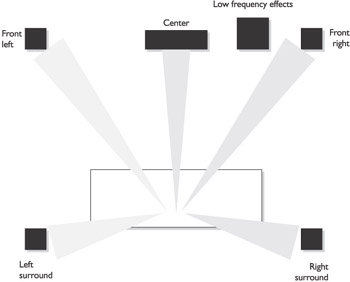
Figure 15-4: The arrangement of speakers in a 5.1 surround sound system
A low frequency effects (LFE) speaker is a sub-woofer speaker that is used to reproduce the very lowest frequency sounds. LFE sounds are those that add impact to the sound used to emphasize certain actions in a film or video, such as a monster’s footsteps, a bomb exploding, and the like.
The standard professional level surround sound is the 5.1 system, which Dolby specifies as including a 12 watt (W) root mean square (RMS) sub-woofer for the LFE channel, a 2W RMS center speaker, and four 2W RMS front and rear speakers. RMS is the measurement for the maximum amount of amplified sound signals the speaker is designed to handle. More watts RMS means more power. A surround sound system also needs an amplifier with enough built-in channels to drive the system. Amplifiers are rated using a couple of different rating scales, but a 5.1 surround sound system requires an amplifier with 6 built-in amplified channels that produces a 50 to 20,000 Hertz (Hz) frequency response. The frequency response of an amplifier indicates the lowest and highest frequencies the amplifier is able to amplify and retransmit.
Surround Sound Formats
Although there are virtual surround sound systems, such as the Sound Retrieval System (SRS) and others, that need only two left and two right speakers and what are called psycho-acoustic effects that emulate true surround sound formats, they have not been developed to the point where they provide the same experience as a true surround sound format and the use of designated speakers.
Table 15-4 lists the most popular digital surround sound formats available.
|
Format |
Systems |
Channels |
Media Supported |
|---|---|---|---|
|
Dolby Surround Pro-Logic |
5.1 |
Four |
Hi-Fi, VHS, and stereo analog TV |
|
Dolby Digital (AC-3) |
5.1 |
Six |
DVD video, Laserdisc, high-definition television (HDTV), digital broadcast satellite (DBS), and pay-per-view and video-on-demand movies |
|
DTS Digital Surround |
5.1 |
Six |
PC and console games, DVD-Video, DVD-Audio, and DVD-ROM software |
|
Dolby Digital EX |
5.1/6.1/7.1 |
Six/seven |
Extends 5.1 surround systems with rear surround channels |
|
THX Surround EX |
5.1/6.1/7.1 |
Six/seven |
Extends 5.1 surround systems with rear surround channels |
|
DTS Extended Surround (DTS-ES) |
5.1/6.1/7.1 |
Six/seven |
Extends 5.1 surround systems with rear surround channels |
Distributed Audio Systems
Depending on whom you ask, a distributed, or multiroom, audio system installed as a part of new home construction or during a major renovation of the home may or may not add value to the home. Whether or not a distributed audio system, as illustrated in Figure 15-5, is an investment that increases the value of a home, it certainly increases the enjoyment and perhaps livability of the home for its occupants.
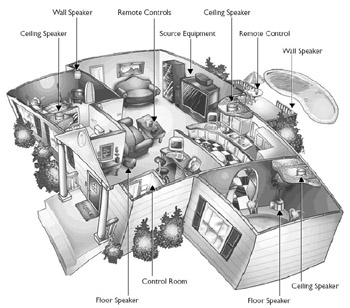
Figure 15-5: A distributed audio system can be only one element of an automated home.
Original drawing courtesy of Hi Tech Homes—North Carolina.
Regardless of the investment issue, a distributed audio system provides an infrastructure where the entire house can share the latest audio technologies, including CDs, AM and FM radio, Minidisc, satellite radio, hard disk drive systems, Internet music, and MP3 players. Depending on the investment made in the system, it is also possible for each room to control not only the local volume of the audio source, but also which source is distributed to that room.
Centralization is the key concept of any distributed audio system. The system and its audio source devices are centrally located, either hidden away or on display, with only speakers and controllers placed in each room. In addition, it is possible for locally placed playback units in any one room to be connected into the system for local playback in that room or in other rooms as well.
Audio System Types
A distributed audio system can be classified by one of two major characteristics and typically it will actually be some combination of both. An audio system can be classified by the type of amplifier it uses or by the number of zones it supports.
Audio Amplifiers
There are two types of audio amplifiers from which to choose:
- Constant current amplifiers
- Constant voltage amplifiers
Constant Current AmplifiersA constant current amplifier is able to support typically only one or two speakers because of its low impedance. The speakers must be directly connected to the amplifier and the minimum impedance load from the speakers cannot exceed the impedance load rating of the amplifier. A constant current amplifier can be used in a small, distributed audio system with several small speakers as long as the total impedance load of the speakers doesn’t exceed that of the amplifier.
When using multiple speakers with a constant current amplifier, the speakers must be used in a “two times” configuration, which means one speaker, two speakers, four speakers, eight speakers, and so on. If more than one speaker is connected, the speakers must be configured in series or parallel connections. Figures 15-6 and 15-7 illustrate speaker configurations for a series configuration and a parallel configuration, respectively. Series connections are seldom used in a single-zone multiroom system, since it is typical to have individual stereo volume controls in each room. When more than one speaker is connected in a series, individual volume controls affect all speakers on the circuit, whereas parallel connections allow individual controls to be located between the amplifier and each pair of speakers. For this reason, most single zone music systems with more than one or two pairs of speakers on a single amplifier use some sort of impedance protection system or an amplifier capable of driving extremely low impedance loads.
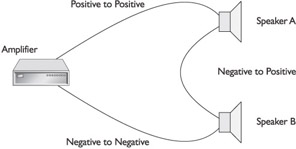
Figure 15-6: Speakers configured in a series

Figure 15-7: Speakers configured in parallel
| Note |
See Chapter 16 for information on series and parallel configurations. |
Constant Voltage AmplifiersConstant voltage amplifiers have a higher impedance output than constant current amplifiers, which allows them to support more speakers on longer runs of speaker wire. A constant voltage amplifier can support wire runs of up to several thousand feet, provided the speakers are mounted with line matching transformers that convert 8-ohm speakers to the higher impedance needed to match the speakers to the 70V output of the amplifier. Figure 15-8 illustrates a common configuration for speakers connected to a constant voltage amplifier.
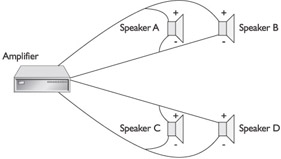
Figure 15-8: Speakers in a series/parallel configuration
| Note |
Chapter 16 covers design and installation considerations for using a constant voltage amplifier. |
Centralized versus Distributed Amplification
The sound signals sent to speakers from centralized source equipment (such as DVD players, CD players, AM and FM radio, and so on) typically must be amplified to overcome the electrical characteristics of the cable and to supply adequate volume at the speaker. In a home audio system, you have two choices for amplifying audio signals:
- Centralized amplification
- Distributed amplification
Centralized AmplificationDepending on the design of the audio system and the characteristics of the cabling, the source devices, and the speakers, a single amplifier may be able to supply enough amplification to drive all of the speakers in a home that are connected to the audio system. In general, the use of a single amplification source can limit the number of speakers in the system because as more speakers are added, which means more speaker cables and possibly local controls, the amount of amplification produced may prove to be inadequate to expand the system too much.
Distributed AmplificationSeveral distributed audio amplifiers are on the market, like the one shown in Figure 15-9, which have the capability to individually drive as many as eight channels (and soon more). In most situations, an eight-channel amplifier is able to distribute stereo sound (which requires two channels) to four areas, zones, or rooms of a home. These devices also include several advanced features that allow the system to be adapted to a wide-range of audio system requirements, including capabilities that allow the power output on individual channels, channels to be bridged to increase the power to a particular area, and the capability to assign a channel to multiple source devices.
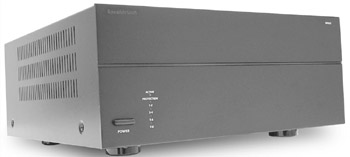
Figure 15-9: An eight-channel distributed audio amplifier
Photo courtesy of Speakercraft.
| Note |
See Chapter 16 for information on audio system design. |
Audio Zones
Essentially, there are two general approaches to configuring a whole house audio system:
- Single zone
- Multiple zones
Single Zone Approach
In a single zone approach, all of the speakers in a house play the same sound supplied from a single source. The entire house is one large audio output zone. This has been a common approach to home audio systems, especially those simply added on in existing houses.
Multiple Zone Approach
In a multiple zone approach, you can select and listen to the audio from a different source in each room. In effect, an audio zone is an area of a home where all occupants hear the same sound. It is logical then that if the occupants of different parts of a house can hear different audio sources, the house has multiple audio zones.
In general, the capability to distribute different audio sources to different parts of a house requires multiple amplifiers/receivers, room controllers, source components, and speakers. A separate amp or receiver drives each zone. Some high-end amplifier/receivers include a separate second internal amplifier to drive a second zone. In fact, there are systems that include as many as six (or more) discrete amplifiers, a source distribution system, and a zone volume control, all built into a single piece of equipment designed especially for distributed audio systems.
Audio System Components
Just about any distributed audio system has certain essential components: speakers, controls, and amplifiers/receivers. Each of these components is typically purchased separately, but even so, they must be matched to one another electrically and performance-wise.
Audio Source Equipment
Without some equipment to receive or reproduce sound from radio transmissions or from a CD or tape, a distributed audio system doesn’t have much purpose.
For most home audio systems, the audio source devices, so-called because they are the source of the audio signals sent to the speakers, are generally one of the following:
- AM/FM tunerThis device receives AM/FM radio signals and amplifies them for distribution to speakers. For a single-zone audio system, a good quality AM/FM tuner/amplifier should be adequate to drive the system. For a multiple zone system, a remotely controlled AM/FM tuner, without an amplifier built in, is best when connected to amplifiers for each room.
- CD/DVD playerThese digital devices read the digitally encoded data from the CD or DVD disc and convert it into analog audio signals. Most multiroom systems use a Multidisc changer capable of holding at least five or more discs so the owner doesn’t have to access the centralized system each time he wants to hear a new selection.
- Digital multiplex (DMX) cable music receiverThis digital form of music transmission is carried to a home on the cable or satellite television signals. The cable or satellite receiver converts these signals to analog audio signals.
- Minidisc playerThis recording format digitally records audio signals on a small magneto-optical disc encased in a protective cassette. The Minidisc player converts the digital signals to analog audio signals.
- MP3 playersAlthough usually associated with computers and the Internet, MP3 recorders and players store the digital audio signals of a CD or another MP3 device on a hard disk drive or a compact flash card for digital to audio playback.
- Hard-drive-based music serversThese relatively new components allow music tracks to be stored on a hard drive for instant access. The music files can originate from the owners’ CDs or MP-3 files. It takes quite a bit of time to “burn” them into the hard drive, but there are services that will perform this task for a fee. They usually have a display that can be sent to a video display device and/or modulated so that the owner can use the local TV in each room to view the library of available music and access songs, albums, or play lists. Some music servers even have several zone outputs so different music zones can listen to different selections from the hard drive at the same time. Additionally, some of these devices can control high-capacity (200-400 disc) CD changers so the client can benefit from the convenience of the video display to access their entire library of recorded music. Some hard drive servers even allow playback of Internet radio stations!
- Satellite radio tunersTwo new subscription services (Sirius and XM radio) that were originally developed for the automotive market deliver commercial-free music and other formats in a digital format much like satellite TV. Tuners are starting to become available, as well as adapters that allow car units to be played in the home. Some multiroom systems manufacturers are starting to offers these satellite radio tuners built into their tuners, pre-amp/controllers, or multiroom receivers.
- Tape playersThere are three types of audio tape players a customer may want in her home audio system:
- Audiocassette tapeThis source device is still widely used, even given the popularity of the CD. Sound is recorded as analog audio signals and playback merely reproduces the original audio.
- DATDAT recorders and players are more common to professional systems, but this type of audio tape player records and reproduces very high-quality sound. DAT records audio signals digitally and in playback converts the digital signals to analog audio signals.
- Reel-to-reel tapeThe technology in use on reel-to-reel tape recorders and players is essentially the same as that used on the audiocassette. The difference is in the size of the tape and that it is wound on open reels.
Speaker Basics
Audio system speakers translate electrical signal representations of audio sounds back into the vibrations that create the sound waves we hear.
Speaker Anatomy
A speaker (I discuss the different types of speakers beginning with the next section) consists of the following major components:
- DriverThis speaker component vibrates the cone (also known as the diaphragm) to create sound waves.
- Cone/diaphragm/domeThe concave cone or diaphragm is typically paper, plastic, or a flexible metal. The cone is vibrated by the speaker’s driver mechanism to create sound waves. Some speakers have a dome, which extends outward from the speaker assembly. Figure 15-10 shows the cone/diaphragm of a speaker.
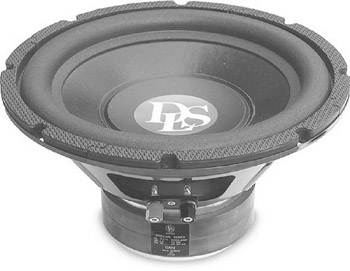
Figure 15-10: A speaker showing its cone, surround, and voice coil - Suspension/surroundThe suspension or surround is a ring of flexible material that attaches the cone to the metal frame, called a basket, and allows it to move back and forth as it vibrates.
- Voice coilSpeakers have magnets at the bottom of the cone and at the top of the voice coil that, depending on the polarity of the power supplied from the voice coil, either attract or repel each other to move the cone in or out. By changing the polarity and amplitude of the voice coil (and its magnet), the magnet on the cone is pulled in or pushed out. Newer speaker models now include a dual voice coil (DVC) or twin voice coil (TVC) that allows both stereo channels to be played from a single speaker.
Frequency Range Speakers
Some speakers have specially adapted drivers that produce sound for a specific frequency range. The primary three frequency range speakers are
- WoofersThis type of speaker has a larger driver than other speaker types and is designed to produce sounds in the low frequencies and pitch.
- TweetersThis type of speaker has a smaller driver and is designed to produce sounds in the highest frequency ranges.
- MidrangeThis type of speaker is designed to produce sounds in a range of frequencies that are between those produced by tweeters and woofers.
Many home audio and home theater speakers include speakers of all three types in one enclosure. To separate the sound to be produced by each speaker type, a device called a speaker crossover is used. There are two types of speaker crossovers: passive and active. Passive crossovers, like the one in Figure 15-11, which are the most commonly used, get their operating power from the audio signal passing through it. Active crossovers are electronic devices that separate the frequency ranges before the signal passes through an amplifier. Each frequency range signal then must be amplified separately before being passed on to the appropriate speaker.

Figure 15-11: A passive speaker crossover that also include an equalizer.
Photo courtesy of AudioControl.
Speaker Enclosures
Essentially, a speaker enclosure is a box that houses the speaker and crossover. However, a speaker enclosure can be an important part of the sound produced by the driver. The first function of a speaker enclosure, beyond holding all of the speaker’s parts, is to absorb the vibrations the driver produces. Quality speaker enclosures are typically made of heavy wood panels, which are able to absorb the vibrations without vibrating itself.
There are four primary types of speaker enclosures:
- Sealed enclosures
- Bass reflex enclosures
- Dipole and bipole enclosures
- Bandpass enclosures
Sealed Speaker EnclosuresSealed enclosures, which are also referred to as acoustic suspension enclosures, are the most commonly used type of speaker enclosures. A sealed enclosure is an air-tight box in which the air pressure inside the speaker box is used to assist in moving the speaker’s driver to produce vibrations (sound waves). The speaker driver (or what most people call a speaker) is mounted to the enclosure and sealed so that no air can escape from inside. Figure 15-12 illustrates how a driver is mounted into a sealed enclosure.
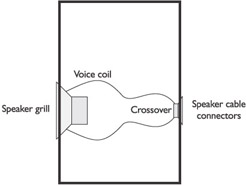
Figure 15-12: A passive speaker crossover that also include an equalizer.
Photo courtesy of AudioControl.
Bass Reflex Speaker EnclosuresWhere a sealed speaker enclosure uses its internal air pressure to push the driver back out when it moves inward, a bass reflex speaker enclosure allows the inward movement of the driver (as it moves in and out to create vibrations) to push the air in the enclosure out a port built into it. This type of enclosure is commonly used with woofers and subwoofers because the enclosure port allows the deepest sounds (lowest frequency sound waves) to escape. Higher frequencies are produced when the driver moves forward and lower frequencies are produced when the driver moves backward. Figure 15-13 illustrates a bass reflex speaker with a port built into the enclosure.
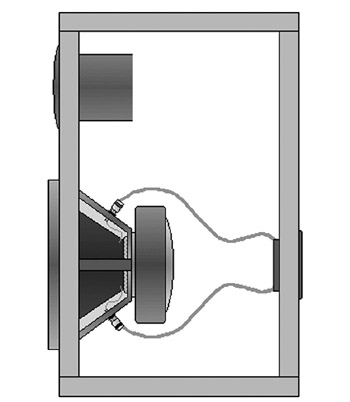
Figure 15-13: A bass reflex speaker enclosure has a port through which low frequency waves can travel.
Dipole and Bipole EnclosuresDipole and bipole speaker enclosures are designed to allow sound to generate both forward and backward from the enclosure. While most dipole and bipole speaker enclosures are square or rectangular, some are trapezoidal and even triangular with three or more surfaces on which speaker drivers are mounted at right angles. Figure 15-14 illustrates a common configuration of these types of enclosures.
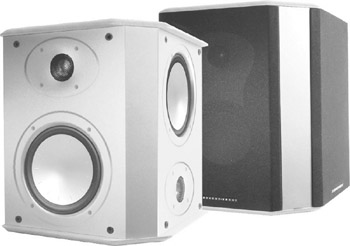
Figure 15-14: Speaker drivers in a bipole speaker enclosure
Photo courtesy of Mordaunt-Short.
Both dipole and bipole speaker enclosures generate equal amounts of sound from at least two of their sides, which are commonly referenced as their fronts and backs, although the sides could be adjacent (as shown in Figure 15-14). The difference between a dipole and a bipole enclosure is whether or not the front and back sounds are in phase.
Phase refers to the timing of two or more sound waves in relation to one another. For example, to enjoy stereo sound, the two stereo channels should be in phase so that you hear them at the same time. To produce sound from two or more speakers that is in phase, the speaker drivers must be synchronized in their movement, meaning that they must be moving in and out at the same time.
A dipole speaker produces equal amounts of sound forward and backward, but the two speaker drivers are not synchronized, which is referred to as being “out of phase.” A bipole speaker produces sound just like a dipole speaker does, but the two sound streams are produced in phase. Bipole speakers, because they are in phase, are commonly used in surround sound systems.
There are passive and active versions of bipole and dipole enclosures. A passive enclosure is very similar to a bass reflex enclosure except that a passive speaker driver is placed in the port. A passive driver doesn’t have a voice coil (an active speaker does) and uses sound waves produced by another driver passing through it to generate sound. So, in a passive enclosure, the sound pushed back into the enclosure is used to produce additional sound through the passive driver.
Bandpass EnclosuresA bandpass enclosure is designed to allow only a single band of frequencies to exit the enclosure, such as bass frequencies. Common types of bandpass enclosures are the single and dual reflex bandpass enclosures. Bandpass enclosures have a single driver mounted in a rear interior sealed chamber and a front chamber that is ported with one or two (or more) passive reflex ports. Figure 15-15 illustrates the basic design of a dual bandpass enclosure.
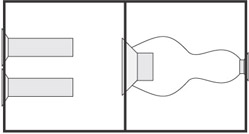
Figure 15-15: A single reflex bandpass enclosure
Types of Speakers
The characteristics of the speakers to be installed depend on a number of factors. Primary among these are the type and capacity of the amplifier that the speakers will be connected to and whether the system is to be a surround-audio system or a two-channel stereo system. In addition, the space they will be located in, the type of listening that will be done, and aesthetics are all important when selecting speaker types.
There are eight standard types of speakers:
- BookshelfThese speakers are smaller speakers designed to sit on shelves, stands, or other surfaces. Bookshelf speakers provide the maximum flexibility when designing a room’s audio system.
- Floor-standing/freestandingThese speakers are larger, cabinet-mounted speakers that usually include one or more tweeters (treble speaker) and woofers (bass speakers). Figure 15-16 shows a floor-standing speaker.
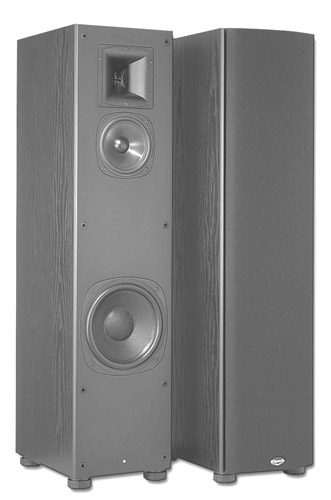
Figure 15-16: Floor-standing speakers with the grill removed (left) and the grill in-place (right)
Photo courtesy of Klipsch Audio Technologies.
- In-ceilingThese speakers are engineered to be built into a ceiling, with most of the speaker hidden inside the ceiling cavity. In-ceiling speakers come in many sizes and shapes. However, the most commonly used in-ceiling speaker design is the round “can” speaker like the one shown in Figure 15-17.
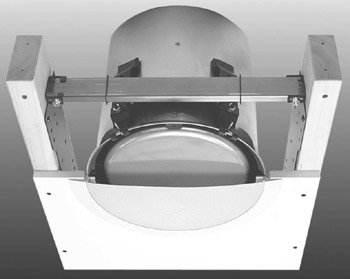
Figure 15-17: An in-ceiling speaker
Photo courtesy of SpeakerCraft.
- In-wallThese speakers are designed to be built into a wall with most of the speaker hidden inside the wall. Like in-ceiling speakers, there are a variety of sizes and shapes available, but the most common are rectangular in shape. Figure 15-18 shows one example of an in-wall speaker.
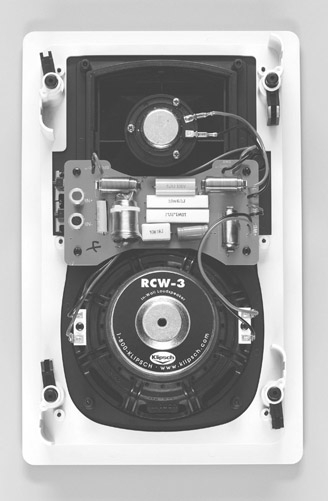
Figure 15-18: A back view of in-wall speaker
Photo courtesy of Klipsch Audio Technologies.
- OutdoorThese speakers come in a wide variety of shapes and sizes that range from standard wall-mount, all-weather speakers to shapes that include rocks (see Figure 15-19), blocks, and other shapes meant to blend into a garden or patio setting.

Figure 15-19: An outdoor speaker mounted to an exterior wall
Photo courtesy of Klipsch Audio Technologies.
- SurroundSurround sound systems are typically used in home theater setups and are usually a combination of special-purpose speakers, each supporting a different part of the audio signal.
- Sub-wooferThese speakers are designed to reproduce the lowest audio frequencies at a volume level that can be felt as well as heard. The “sound” of a sub-woofer is made up of frequency waves so large that it is often perceived more through vibrations felt in one’s spinal column and skull than the manipulation of the eardrum. For this reason, some home theaters actually supplement the sub-woofer system with mechanical devices that cause the listener’s chair or floor to actually shake. Figure 15-20 shows a freestanding sub-woofer with the grill cloth removed. Exact placement in the room is not critical, but sub-woofers are usually freestanding on the floor or hidden in a cupboard or closet and the sound disperses through cloth or vents.
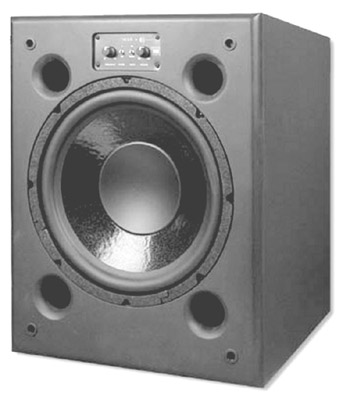
Figure 15-20: A sub-woofer speaker with its grill removed
Photo courtesy of Sonance.
- WirelessActually there aren’t really any wireless speakers, but there are wireless speaker systems. A wireless speaker system uses an audio out transmitter and a remote receiver where the speakers are connected. The audio signal is transmitted using radio frequency (RF) signals to the receiver and on to and out of the speakers. As more devices in the home emit RF interference, the reliability and performance of wireless speakers becomes more compromised and inconsistent. This is probably why they are less popular than when they were first introduced about 15 years ago. Wireless speakers are typically not recommended except as a “last-ditch” solution in a multiroom audio system.
- InvisibleJust as they’re called, these speakers are not visible. They are located behind the drywall and use the wall cavity to resonate the sound. There are two types of invisible speakers. Transducers are mounted inside a wall or ceiling cavity between wall studs or ceiling joists and use the drywall to transmit the sound to the room. The other kind of invisible speakers are mounted flush with the drywall or plaster wall (a hole is cut in the wall board of a wall or ceiling), have a mesh over them, and a thin layer of plaster is then applied to make them blend into the drywall. Figure 15-21 shows how one such speaker is attached to the back of a wall.
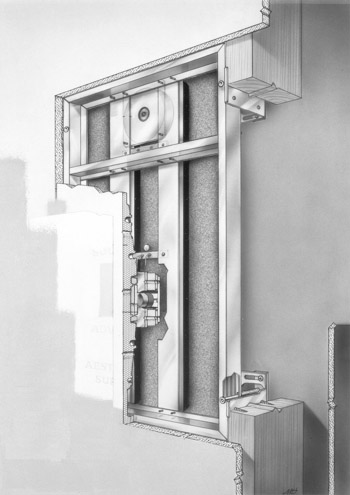
Figure 15-21: An invisible speaker assembly mounted on the backside of a wall’s wallboard
Photo courtesy of Sound Advance Systems, Inc.
Local Controls
Regardless of whether the distributed audio system is in one or multiple zones, the objective is to control the centrally located equipment from any remote listening location. Much of the benefit of a distributed audio system is lost if the home’s occupants must physically go to a central location to change the source device or the station, track, disc, or channel.
The best approach to controlling a distributed audio system is using distributed remote controls that transmit control signals back to the central equipment and allow the user to control the unit just as if she was standing right in front of it.
The most popular ways of controlling a distributed audio system are
- Local volume controls
- Control keypads
- Remote controls
Volume Controls
Volume controls come in several styles, including rotary dial, keypads with rocker switches, and push buttons. The type of volume controls used in home audio systems depends on the homeowner’s preference and the number of zones the system supports. In a single zone multiroom system, it is advisable to have a volume control located in each room where speakers are installed to provide local volume control.
Sometimes designing sub-zones (individual rooms within a zone) make sense. An example might be a kitchen and breakfast nook that share an open air space. In this case, it might be desirable to have a zone keypad in the kitchen, with individual volume controls and speakers in both the kitchen and breakfast nook. It might make sense to play the speakers in one room area louder than the other, but it would never make sense to have two different music sources playing in the two rooms simultaneously.
Figure 15-22 shows a rotary volume control used to simply mute or turn up or down the volume of local speakers. Volume control can also be handled by stand-alone devices requiring manual operation or include infrared (IR) receivers that allow them to be controlled by a remote control device.
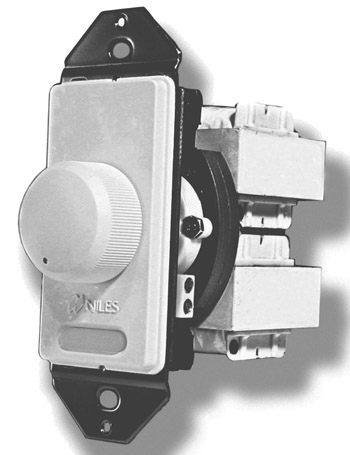
Figure 15-22: A rotary volume control
Control Keypads
Control keypads are available in a variety of styles. They can be used to simply mute or turn up or down the volume of local speakers or perform a full range of control functions, including controlling multiple source devices (when wired to a zone splitter device) as well as controlling their volume in a room.
Keypads can be sold as part of a distributed audio system or be designed specifically to control the distributed audio system. They can also be of a generic nature and designed and programmed by the installer to control equipment (see Figure 15-23). Programming can be done at the keypad or on a computer and downloaded to the keypad. Follow the manufacturers documentation for setup and programming procedures.
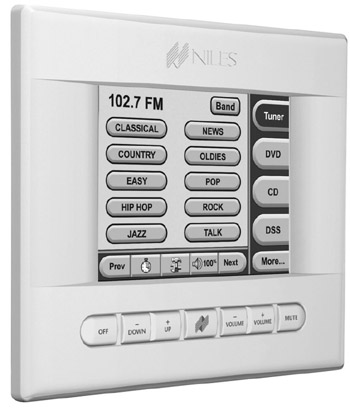
Figure 15-23: A touch screen audio system keypad control
Photo courtesy of Niles Audio Corporation.
Remote Controls
IR is the most commonly used technology for the remote control of audio components, including centrally located source devices controlled from a room or zone. IR control is most reliable when its signals are received by an in-room receiver, such as a keypad volume control, and transmitted directly over home run wires to the audio components using an IR repeater system.
An IR repeater system typically includes in-room IR receivers (see Figure 15-24) and a main system unit where the IR receiver is wired. The IR receiver converts the signal for transmission over the wire to the master system unit, which converts the transmitted signal back to IR and “flashes” an IR beam to the audio source device or remote speakers.
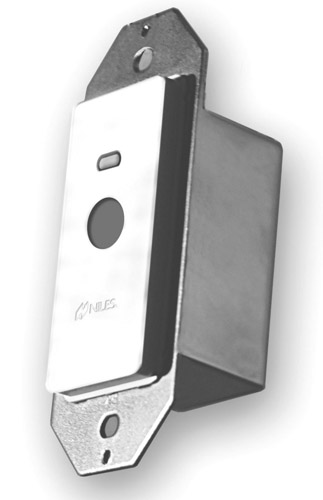
Figure 15-24: An in-room IR receiver is connected to a central control device that controls source devices.
If coaxial cable has been placed in multiple rooms or zones, it can be used to send IR commands from remote locations to the central video system. IR signals are received remotely and converted for transmission over the coaxial cable. Special products must be used to extract and isolate the IR signal from the video signal on the coaxial if it is also being used to send a TV signal to that room.
| Note |
I assume you realize that a signal extension system is only needed if situations where the device being controlled is not in the same room. In a single zone setup, where the entire home is one large listening zone, an IR extender can be used to control a centralized audio source device. |
Multiple Device Controllers
If the design goal of the audio system is to have the capability of supplying a completely discrete sound stream to any room in the home, using multiple device controllers (see Figure 15-25) that are hard-wired over Cat 5e home run back to the centralized audio source equipment is recommended.
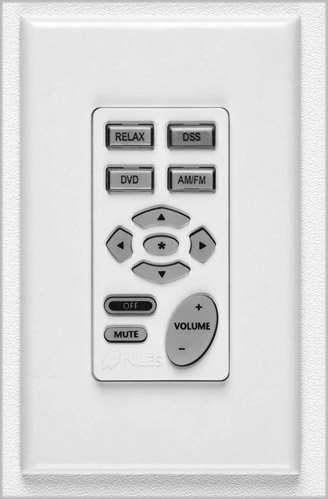
Figure 15-25: An in-room audio systems controller that also has an IR receiver built in
Photo courtesy of Niles Audio Corp.
A multiple device controller is able to receive signals from IR remote controls and serve as a replacement device that consolidates the separate remote controls of the source devices. In-room multiple device controllers can be wall-mounted (Figure 15-25), handheld (Figure 15-26), or tabletop (Figure 15-27).

Figure 15-26: A handheld universal remote control
Photo courtesy of Koninklijke Philips Electronics N.V.
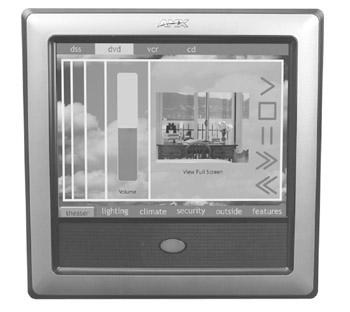
Figure 15-27: A tabletop multiple device controller
Photo courtesy of AMX Corporation.
Another type of multiple room/multiple device system controllers are systems built on the A-BUS technology that transmits audio, IR, and source status signals over Cat 5e TP cable. The A-BUS input unit receives incoming audio signals, distributes them, and provides audio and source status signals to the system as well as receiving IR command signals through its enhanced keypad devices (see Figure 15-28).
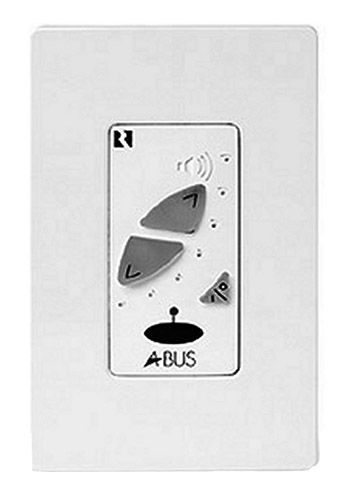
Figure 15-28: An A-BUS amplified keypad
Photo courtesy of Russound.
A-BUS is a multiple room system that is able to control audio in four rooms and can be expanded in increments of four rooms by adding additional zone distribution hubs. A-BUS also provides support for connecting local source devices, such as portable players, for playback on local speakers.
Review
Sound is produced when an object creates vibrations in air, liquid, or something solid. Different sounds have different vibration patterns and air pressure fluctuations, which translates into a sound’s frequency and amplitude. A dB measures the intensity or the level of a sound.
Recorded or broadcasted sounds are either analog or digital. Analog sound is in its natural state. A sound wave is sliced into a number of samples at different points on its wavelength. Each sample is converted to a numeric value and stored as a binary number or digital value. Analog sound is converted for digital recording with an ADC and a DAC is used to reconvert the digital values back into analog sound.
A line level audio signal has 1 to 2 V of amplitude and is used as the normal interface level between audio components. Speaker level audio is an amplified line level signal.
Unbalanced audio is transmitted on a single conductor cable that has a single shield. Balanced audio has at least two conductors, a live conductor and a return conductor, which are in opposite phase.
Resistance measures the physical opposition of a conductor to the flow of an electrical current through it. Resistance is measured in ohms. Capacitance measures the capability of a circuit to store an electrical charge. Capacitance is measured in farads. Inductance measures the resistance of a conductor to changes in current. Inductance is measured in henrys. Impedance is the resistance force a conductor has to an AC flow. Reactance measures the cumulative effect of capacitance and inductance on an AC flow.
A true surround sound system incorporates several speakers that separate the sound by frequency as well as physically literally surround the listener. A true surround sound system has five, six, or seven speakers. A LFE speaker is a sub-woofer speaker that is used to reproduce the very lowest frequency sounds. The standard professional level surround sound is the 5.1 system.
RMS is the measurement for the maximum amount of amplified sound signals the speaker is designed to handle. Frequency response of an amplifier indicates the lowest and highest frequencies the amplifier is able to amplify and retransmit.
A distributed audio system provides an infrastructure that allows an entire house to share audio technologies. It is possible for each room to control the local volume and source devices as well. Centralization is key to distributed audio.
There are two types of audio amplifiers from which to choose: constant current amplifiers and constant voltage amplifiers. A constant current amplifier supports only one or two speakers because of low impedance. A constant current amplifier is typically used in small, distributed audio systems with small speakers. Constant voltage amplifiers have a higher impedance output than constant current amplifiers and can support cable runs up to several thousand feet.
There are two choices that can be made for amplifying audio signals: centralized amplification and distributed amplification.
There are two general approaches to the configuration of a whole house audio system: single zone and multiple zones. In a single zone approach, all of the speakers in a house play the same sound from a single source. In the multiple zone approach, each room can select and listen to the audio from multiple zones.
For most home audio systems, the audio source devices are generally among the following: AM/FM tuner, CD/DVD player, DMX cable music receiver, Minidisc player, MP3 players, hard-drive based music servers, satellite radio tuners, and tape players.
Audio system speakers translate electrical signal representations of audio sounds back into the vibrations that create the sound waves we hear. A speaker consists of these major components: driver, cone or dome, suspension/surround, and voice coil. Some speakers have specially adapted drivers that produce sound for a specific frequency range. The primary three frequency range speakers are: woofers, tweeters, and midrange.
A crossover is used to separate the sound to be produced by each speaker. There are two types of speaker crossovers: passive and active. Passive crossovers get their operating power from the audio signal passing through it. Active crossovers are electronic devices that separate the frequency ranges before the signal passes through an amplifier.
A speaker enclosure houses the drivers and the crossover. It absorbs the vibrations the driver produces. The primary types of speaker enclosures are sealed enclosures, bass reflex enclosures, dipole and bipole enclosures, and bandpass enclosures.
The standard types of speakers are bookshelf, floor-standing, in-ceiling, in-wall, invisible, outdoor, surround, sub-woofer, and wireless.
The ways available for controlling a distributed audio system are local volume controls, control keypads, and remote controls.
Questions
- Which two of the following are types of audio amplifiers?
- Current volume amplifier
- Constant current amplifier
- Constant volume amplifier
- Constant voltage amplifier
- Which two of the following are configuration types for speaker wiring?
- Series
- Parallel
- Inline
- Discrete
- What type of configuration is in use in a house when all rooms hear the same audio playback?
- Single zone
- Multizone
- Composite
- Aggregate
- The audio source device that increases the amplitude of reproduced sound is called a(n)
- Tuner
- Radio
- Amplifier
- Amplitude modulator
- What speaker system has become popular in home theater installations?
- Sealed enclosure
- In-wall or in-ceiling
- Stereo
- Surround
- What type of speaker is designed to reproduce the lowest audio frequencies at a volume that can be heard?
- Bookshelf
- Tweeter
- Monitor
- Sub-woofer
- Where should volume controls be located in a single-zone multiroom audio system?
- One central location only
- In each room where speakers are located
- For each speaker pair
- In all rooms of the home
- Which of the following can be used to control a distributed audio system?
- Keypad
- Remote control
- Rotary volume control
- Multiple device control
- All of the above
- What type of wiring is typically used to connect a multiple device controller to centrally located source equipment?
- Speaker wire
- Cat 5e cable
- Coaxial cable
- Quad wire
- Which of the following is an audio control system that transmits audio, IR, and source status signals over Cat 5e cable?
- A-BUS
- CEBus
- MP3
- PLC
Answers
- B and D. The other two choices were made up.
- A and B. A third possibility is in series in parallel, which combines the two correct choices. The other two choices do not apply to speaker wiring.
- A. A multizone configuration allows each zone to control the different audio sources being heard.
- C. Yes, that’s the job of the amplifier. Often the signal strength of reproduced sound is not strong enough to drive the cone on the speakers to produce sound.
- D. A surround sound system enhances the experience of watching a video.
- D. Sub-woofer. Woofer would also be an acceptable answer.
- B. If the goal of the system is to provide enjoyable audio to every room, then the occupants should be able to control the volume in any room with speakers. This is defeated if there is only one volume control in the home.
- E. Any or all of these devices can be used to control a distributed audio system.
- B. The multiple wire pairs provide flexibility for multiple devices in a room or zone.
- A. None of the other choices would be acceptable audio control technologies. MP3 is a digital audio file format, anyway.
Part I - Home Technology Installation Basics
- Wire and Cable Basics
- Connector Types and Uses
- Wiring Installation Practices
- Codes, Standards, and Safety Practices
Part II - Structured Wiring
- Infrastructure Wiring Basics
- Planning a Structured Wiring Installation
- Rough-In Installation
- Trim-Out Installation
- Troubleshooting Structured Wiring
Part III - Home Computer Networks
- Computer Network Basics
- Computer Network Hardware
- Computer Network Software
- Designing and Installing a Computer Network
- Troubleshooting a Home Network
Part IV - Audio/Video Systems
- Distributed Audio System Basics
- Designing and Installing Distributed Audio Systems
- Distributed Video Basics
- Designing and Installing Distributed Video Systems
- Troubleshooting Audio Systems
- Troubleshooting Video Systems
Part V. Home Lighting Management Systems
- Home Lighting Basics
- Home Lighting Devices
- Designing a Home Lighting Control System
- Installing a Home Lighting Control System
- Troubleshooting and Maintaining Lighting Control Systems
Part VI - Telecommunications
- Home Communication System Basics
- Designing and Installing a Home Telephone System
- Troubleshooting a Home Communication System
Part VII - HVAC and Water Management
Part VIII - Security System Basics
- Security System Basics
- Designing a Home Security System
- Installing a Home Security System
- Troubleshooting and Maintaining a Home Security System
- Home Security Surveillance Systems
- Home Access Control Systems
Part IX - Home Technology Integration
- Defining Users Needs and Desires
- User Interfaces
- Home Automation Controllers
- Programming
- Integrating the Connected Home
- Other Home Technology Integration Devices
Part X - Appendices
EAN: N/A
Pages: 300
